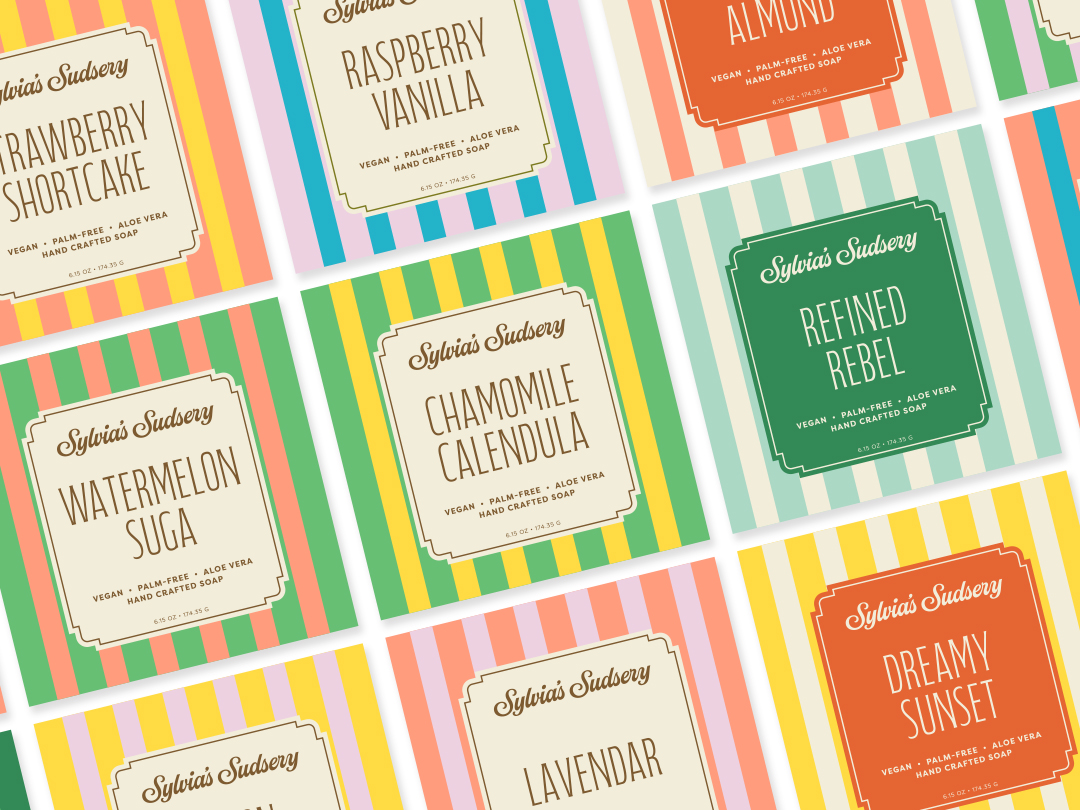The 4 Types of Brands We Build (And Why Distinction Matters)

With the consistent dominance of visual platforms, we all know that strategic branding is a necessity. Research shows that a well-executed brand can increase revenue by up to 33% by increasing audience affinity and loyalty (Lucidpress, "The Impact of Brand Consistency"). Still, the key word here is “well-executed.” Building your brand doesn’t mean finding a quick, one-size-fits-all solution to check it off your list. Unique organizations require unique solutions based on industry, location, objectives, audiences, and a slew of other factors.
Our branding process at Redhead varies significantly, from large corporations, to cities, to local businesses. Some brands require deep stakeholder engagement and long-term scalability. Others are more intimate, experimental, or community-driven. The brands we build often fall into four distinct types — each with their own visual and messaging elements to consider.
1. Corporate Brands: Built for Versatility
Corporate brands are complex and utterly seamless. They serve multiple audiences, often require sub-brands, and must please various stakeholders (board members, investors, customers, and pretty much everyone). A successful corporate brand balances creativity with practicality — it is both strategic and flexible.
Take Peckham, for example. As a multifaceted organization with more than 2,600 employees, its brand needed to apply smoothly across six lines of business as part of an organization-wide brand system. To accommodate this, we incorporated clean, sans-serif typography and a color palette that could be toned up or down, all while conveying stability and trust. Its logo paid special attention to scalability, ensuring accessibility and visibility across everything from a business card to a truck.
When developing corporate brands, we conduct extensive stakeholder research, ensuring alignment with board members, leadership teams, and employees. These brands must be adaptable, often leaning slightly more conservative while still standing out within a competitive landscape. They’re built to be workhorses, able to stretch across departments, materials, and messaging without sacrificing integrity.
2. Place Brands: Shaping Perceptions of Home
Place branding is about fostering a sense of identity and pride in a physical space where people live, work, or visit. A place brand is a feeling. It can elevate a reputation, influence economic development, and increase quality of life. Emotion is a key part of this branding, considering 62% of consumers have an emotional connection to the brands they buy from or engage with the most. (Salesforce, “State of the Connected Customer Report”).
One clear example of a place brand is a city, like Trenton. City brands provide a unique opportunity to translate the essence of a location into a visual identity. City brands influence how people perceive their home, often situating everybody in town as a stakeholder. Design elements here often evoke heritage or a sense of belonging.
At the same time, a place brand can also include a more specific physical space, or “third place.” These locations are hubs outside of the home (the first place) and the workplace (the second place) where people can connect and build community. Ovation Center for Music and Arts is a prime example of a third place brand; it will be a cultural touchstone, where visitors as a community are affected by its success. Cultivating an inclusive space for people to gather is key here, ensuring there is consistent emotional connection to this identity.
3. Boutique Brands: Personal, Playful, and Purpose-Driven
Boutique brands are often well-established organizations and businesses looking for a refresh, smaller than a corporation but with more chapters than a new startup. Unlike corporate brands, which prioritize consistency across multiple platforms, boutique brands can afford to be a bit more playful, personal, and visually distinct due to their smaller scale. There are often fewer stakeholders, allowing for more creativity and risk-taking.
A prime example of a boutique brand is McCall Hamilton, a bipartisan government affairs law firm. With a 30-year legacy, the firm sought a new brand after undergoing organizational changes. McCall Hamilton came to us with a pre-established, devoted fan base and specific goals for what this brand would accomplish. With this in mind, we integrated credibility, creativity, and sophistication to build a versatile visual brand and brand platform that would suit their existing style and audiences.
Boutique branding isn’t about mass appeal — it’s about crafting a unique, personality-driven identity that resonates deeply with a specific audience. These brands require thoughtful, curated design choices that reflect their character. Needless to say, this sets the stage for creativity to flourish.
4. Entrepreneurial Brands: Launching Something New
Entrepreneurial brands are often built for startups and young ventures. Because they’re sometimes starting from scratch, these identities often tend to be more grassroots and fast-turnover, with a personal flair for a curated audience or followers of a certain initiative.
Downtown Lansing retailer Sylvia’s Sudsery sought a brand centered on self care that tied to their interesting backstory. Leaning into their quirky personality, we used expressive, script typography with a custom-tailored feel to present this brand as more intimate and high-touch when it comes to personal customer engagement. As an entrepreneurial brand, audiences have an emotional connection as a part of this community and consider themselves to be a part of its identity. 
While corporate or boutique brands generally have an existing audience, entrepreneurial brands must establish a steady visual identity and brand platform from the start. There are familiarity hurdles to overcome, considering consumers make 21% of new product purchases from brands they already support (Harvard Business Review). With this in mind, establishing foundational brand awareness is a top consideration with entrepreneurial brands. Still, there are many positives and places for opportunity; a new brand is a clean slate, with countless possibilities to forge your own path.
Finding What Works for You
No two brands are the same — and neither is the process behind them. There are specific needs to consider. A corporate brand requires structure and versatility; a place brand needs emotional resonance; a boutique brand must have a curated identity; and an entrepreneurial brand sets the tone. That’s why, at Redhead, we don’t put all brands through the same, cookie-cutter machine. We carefully consider the categories in which brands fall, and the specific audiences and requirements for each.
A strong brand is about establishing identity and, in turn, delivering results. With these differences in mind, we can ensure that your brand is custom-built to tell your story.
